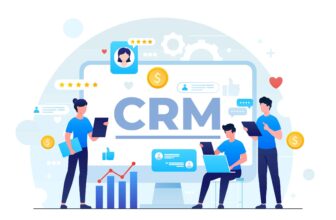
As remote work becomes an integral part of modern business, Human Resources (HR) departments face the challenge of effectively managing remote teams while maintaining trust and productivity.
Proper monitoring ensures employees stay productive and engaged, but it must be balanced with respect for privacy and morale.
Implementing smart and ethical monitoring practices can lead to better performance tracking and improved employee satisfaction. This guide dives into the best strategies HR professionals can use to monitor remote employees effectively and responsibly.
1. Establish a Transparent Monitoring Policy
Transparency is crucial in remote work settings to maintain trust and morale. HR departments should create a clear, well-documented policy that outlines what data is being collected, the purpose behind it, and how it will be used.
This policy should be shared with all remote employees before implementation to avoid misunderstandings and build an atmosphere of openness. Employees need to feel assured that their privacy is respected, and any monitoring aligns with company goals and personal boundaries.
2. Use Legal and Ethical Practices
HR must ensure that any employee monitoring practice complies with local and international laws concerning privacy and data protection. This means understanding data handling regulations such as GDPR in Europe or CCPA in California, and ensuring practices align with these standards.
Being legally compliant not only protects the company from potential lawsuits but also reinforces an ethical stance on employee treatment. Ethical monitoring means avoiding intrusive practices and focusing on work-related data collection only.
3. Set Clear Productivity Metrics
To measure employee output effectively, HR should shift focus from tracking hours worked to evaluating productivity through deliverables and key performance indicators (KPIs). This involves setting clear, realistic goals that align with the employee’s role.
For instance, for a content writer, tracking the number of high-quality articles produced per week is more meaningful than monitoring their active hours online. This output-focused approach not only respects autonomy but also provides a more accurate reflection of performance.
4. Utilize Appropriate Software Tools
Employing robust software solutions that support task tracking, communication, and collaboration is essential. Tools like Slack, Microsoft Teams, and Asana provide functionalities that help HR monitor productivity without overstepping.
Features like task management, shared calendars, and performance dashboards enable HR to keep tabs on project progress, team workloads, and deadlines. It is important to choose platforms that strike a balance between monitoring capabilities and respecting employee privacy.
5. Implement Attendance Check-Ins
Regular check-ins help ensure that employees maintain their availability throughout the workday. This can be as simple as requiring staff to check in via an online platform when they start and finish their shifts.
These attendance logs can help HR understand working patterns and detect any potential issues, such as overworking or underperformance. However, it’s essential to avoid making check-ins too frequent, as it can feel micromanaging and counterproductive.
6. Regular Communication Channels
Establishing strong communication lines is vital for monitoring employee engagement. HR can encourage teams to use video conferencing tools, such as Zoom or Google Meet, for regular updates and discussions.
Daily or weekly team meetings can help managers assess the workload and offer support where needed. Instant messaging platforms can be utilized for quick status updates, ensuring that employees remain connected. Continuous communication not only helps in monitoring but also fosters a collaborative environment.
7. Feedback and Adjustments
The effectiveness of a monitoring program depends heavily on how it is perceived by employees. HR should seek regular feedback through anonymous surveys or direct conversations to understand how monitoring affects morale.
Are employees comfortable with current practices? Do they feel overly scrutinized? Addressing these insights helps HR refine its approach to maintain a balance between effective monitoring and fostering a supportive, non-intrusive work environment. Iterative feedback ensures that policies adapt and evolve to the needs of the workforce.
Final Words
Effective remote employee monitoring requires a blend of transparency, appropriate technology, and respect for privacy. HR must adopt a responsible, ethical approach that builds trust while ensuring productivity.
By establishing clear policies, utilizing the right tools including time and attendance management software, and consistently gathering feedback, HR can foster an environment where remote teams thrive. Balancing oversight with empowerment is the key to a productive and satisfied remote workforce.
Frequently Asked Questions
1. What should HR avoid when monitoring remote employees?
HR should avoid overly intrusive practices, such as recording private conversations or tracking personal data unrelated to work. This can erode trust and lead to decreased morale.
2. What are the best tools for monitoring remote work?
Popular tools include Asana, Slack, and Microsoft Teams, which offer task management, instant messaging, and project tracking features to monitor productivity effectively.
3. How can HR maintain trust while monitoring employees?
HR can maintain trust by being transparent about monitoring practices, using data responsibly, and ensuring that monitoring is aimed at improving productivity, not micromanaging.







